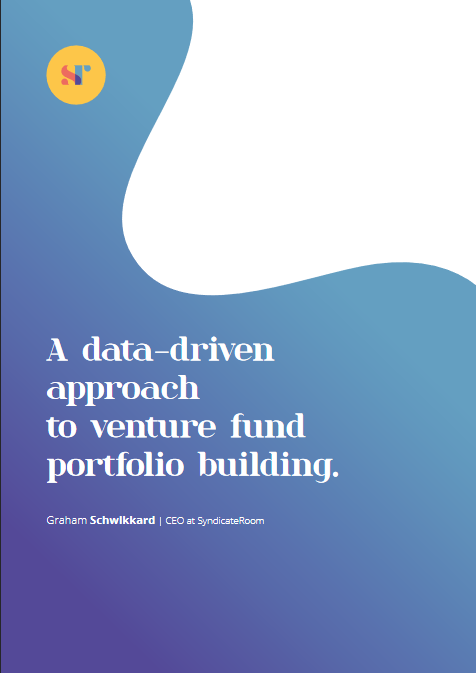Most Venture Capital funds underperform
For investors with sufficient appetite for risk, investing in early-stage businesses through the Enterprise Investment Scheme (EIS), SEIS, or a VCT is often an attractive prospect.
In each case, these investment schemes offer extremely generous tax incentives and/or deferral options which grant investors flexibility over managing capital gains tax, inheritance tax, and the ability to offset any losses from failed investments against their tax bill. On top of this, in the case of EIS particularly, annual investment limits are very high, meaning that once other investment vehicles are maxed out, these investments provide an excellent option to get tax relief on significant sums (£1m – £2m per year depending on company type).
But many funds operate on a paradox. On one hand, they are legally obligated to inform investors that there is no way to know whether the startups they invest in will succeed or fail. They offer past performance as a measure of their ability to identify successful companies, while admitting that past performance offers no guarantee of success in the future. You’d be amazed how many funds tell you that because they’ve done it once, they can do it again. Alarm bells should ring when you see this, because there is simply no way to know with early-stage investing.

Some funds address this paradox by emphasising a value-add hypothesis. The oversight and support they can offer startups is billed as the missing ingredient that will serve to ensure their selections are successful. Most likely, this support is very helpful. But as cash flow is the single biggest factor in the failure of early-stage companies, unless this support comes in the form of pumping in money, which outside of the company's raises, it won’t, its effectiveness is difficult to measure in terms of its contribution to eventual success, or degree of growth.
A further drawback to this approach is that supporting startups is resource intensive, in terms of investors’ and funds’ time, and so it further limits the size of portfolios. There simply won’t be time to go around for a portfolio of, say 50 or more companies, so value-add cements the small portfolio approach in place, and forces investors to double down on their small group of hopefuls. We'll talk more about why a large portfolio is important shortly.
Bottom line? It still guarantees nothing, but now you have a small portfolio and no chance of a larger one with this fund. It's a big decision for a long term investment that could take ten years or more to bear fruit.

At the heart of this issue is that while we all know investing in startups is high risk, in their eagerness to sell, funds still push investment strategies that hinge on fund managers' powers of foresight. If there’s no way to know who will succeed or fail, a system that is built to work with this reality to find the optimal chance of growth for investors is better for investors.
Which brings us to the question – what are the strategic components needed to engage with high risk investments in such a way that you gain the optimal chance of success, potential for the highest possible returns, and as little risk as possible?
1. Large, diverse portfolios are essential to optimise return potential.
What’s the big error that most early-stage funds make? They build portfolios that are too small. Sometimes as large as 20, but usually between five and 15 companies.
Why? They do it because their fund models trade on the idea that they are able to single out the small batch of companies that are going to do well, and only invest in those. In fact, the chances of successfully picking this small group and leaving out the companies that fail is extremely low. Unfortunately, for these firms, the illusion they trade on creates a genuine disadvantage for their investors.
Portfolios should be much larger. We build portfolios of 50 companies, and as investors continue to invest, we add more. If investors time each new investment with the end of their previous deployment, they can build their portfolio by 50 companies per year. 150, 200, 300 companies – these are the kinds of sizes people should aim for.
Our decision to do this is based on real-world data. Large portfolios are essential because venture returns follow a power law distribution. That is, an outcome’s likelihood is inversely proportional to its size. In venture capital, a small number of the available investments generate the vast majority of the returns. As you add more companies to your portfolio, your chances of it containing one or more of the few companies that generates the lion’s share of returns increases.
The research on how this works is easy to find. We conducted our own research on the UK startup market specifically, using real historical data, which demonstrated how larger portfolio sizes increase growth potential and decrease variance. Our research involved selecting a random selection of historical UK startups fundraising from 2011-2014, repeating the selection 1,000 times and comparing the resultant growth.
More recently we conducted the first ever study showing that UK venture capital returns adhere to a power law distribution, specifically a distribution with an alpha of 1.8. An alpha of 1.8 means that both the average and the variance are limitless, and that making a greater number of investments will increase your portfolio's expected average return.
There are plenty of articles on this subject, like this one by Steve Crossan, whose Monte Carlo simulations of varying startup sizes found the following:
“With just five investments in the portfolio, you have a more than 40% chance of losing money. This goes down rapidly until portfolios sizes between 100 and 150 when there’s very little or zero chance (what this means is that none of the 1000 random portfolios at that size lost money). The chance of tripling the fund gently increases as you increase the portfolio size, though its rate of increase slows.”
Investing in startups is high risk, and this approach doesn’t change that, but it does work from that premise to devise an optimal approach.
2. Access to the best startups is vital. The best way to get it is a broad network of experienced angel investors.
Needless to say, large portfolios don’t populate themselves. While choosing a small number of companies that seem to have a better chance than others and hoping for the best isn’t a good strategy for venture capital, at some point in the process, somebody does have to make a decision about which companies to invest in.
But rather than looking for expertise in picking winners, which as we’ve established, is not something you can rely on for success, your selection process should be built around access. Who has an established track record of meeting, investing in, and supporting new startups through their journeys? Who has done it enough to fail a few times, learn from their mistakes, and have a nuanced understanding of the red flags that make some companies a no-go, even if they seem to be a winner on paper? Who are they connected to, which other investors, and which startups? Over time, establishing this network means that your selection pool is far wider, and the selections made by this network bring together a multitude of informed perspectives and startups that you would otherwise be unaware of.

Instead of a claim to selection superpowers, this approach compounds the advantage of large portfolios for investors by increasing the likelihood that the overall quality of the 50+ companies in your portfolio will be higher. These firms are not selected merely for their on-paper prospects. These firms possess the characteristics that experienced and successful angel investors have found to matter, to the degree that they are willing to invest their own money in them. To be completely transparent – even this approach does not guarantee a higher number of successful startups will be selected. But it engages with the problem at hand, and the nature of the market, to give investors the best possible chance for success.
3. This approach requires a very efficient investment ‘machine’.
The drawback around investing in a high volume of deals to build larger, more diverse portfolios is simple. Most funds can’t do it. It requires an efficient, streamlined system in which a network of angel investors is built and continually developed, with regular contact and a sufficient level of trust that a great enough number are willing to share their deals. Why would they share anything? Well, in many cases, angels are more than happy to bring additional capital into early-stage rounds to make sure raise targets are achieved.
There is more to the angel selection process of course. In our case, we have a very strict criteria that angels must meet before we will agree to co-invest. This includes things like their investment track record and success rate, together with a necessary deal volume in a given time period, but also restricts any investments that are outside of that angel’s proven investment experience. Once you have a large enough number of deals coming in, you need to ensure your investment machinery can action those investments in a timely, thorough manner, so you keep all parties happy.
It’s vital to establish a system that can act quickly and effectively to get the investment process for individual companies turned around while ensuring that all necessary due diligence is carried out, so that companies are happy to be involved, angels don’t find it a hassle, and that overall everyone is left feeling satisfied. Then you need a team dedicated to actioning that process, and the tech in place to keep it running smoothly, accurately, and in a way that can be readily replicated. Coordination across teams is vital, as is a tailor-made backend system to track companies, change in holdings, and show it all to our investors.
Get your copy of our whitepaper

Looking for a fund that does things differently?
Download our whitepaper here, which sets out the uniquely data-driven, co-investment model of our fund, Access EIS.
Register to learn
more about our data,
fund and venture capital

